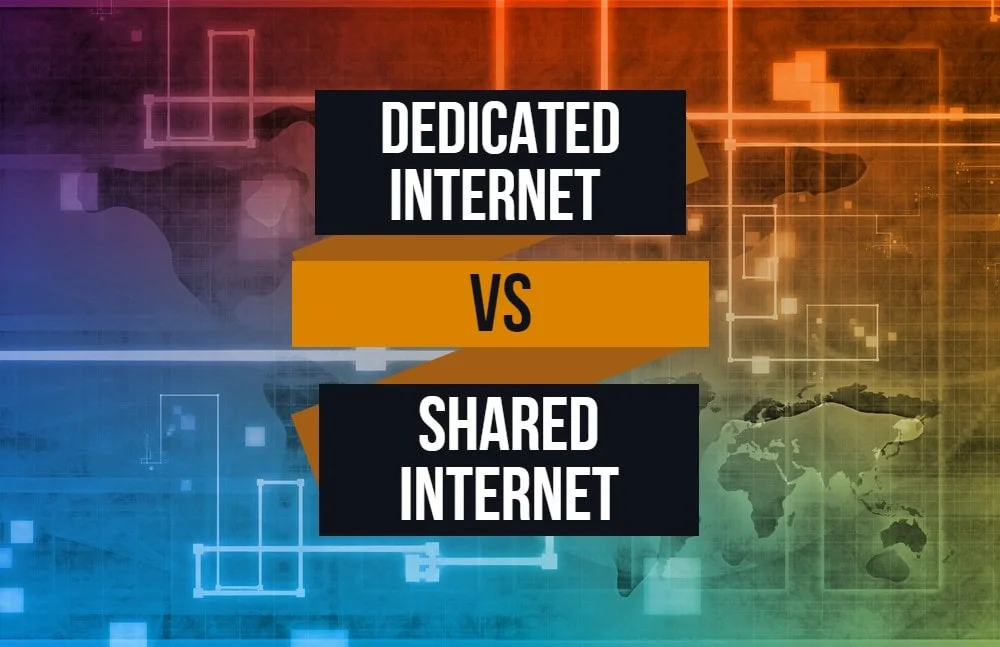If you have ever heard the terms ‘shared internet’ and ‘dedicated internet’, you might have wondered exactly what they mean. What separates these two, and which type of internet is a better choice for your senior living facility? You’ll find the answer in our overview of the 5 main differences between dedicated internet access and shared internet access.

Shared Vs. Dedicated Internet: 5 Key Differences
1. Speed
Shared internet connections often advertise impressive speeds, but what they don’t tell you is that those speeds can only be achieved when there are very few other users actively using that connection at the same time you are. This rarely happens, and shared connections rarely reach those top speeds as a result. They can state this in their advertising because they always include the term “up to” prior to the advertised speed.
If you have a dedicated connection, however, your community is the only user allowed onto the network and will be able to use it to connect to the high-speed internet. This makes it much easier to maintain high connection speeds, allowing for lightning-fast webpage loading, uninterrupted video streaming, and more.
2. Reliability
Although network reliability has improved considerably over the years, users on a shared internet connection can still expect to experience the occasional service outage. In a CCRC facility with life-sustaining medical devices connected to the cloud, even a few minutes without service could have deadly repercussions.
Dedicated connections, however, are typically monitored 24 hours a day and are given priority access to proactive maintenance and repairs. Outages are extremely rare and tend to be very short in duration. The result is internet service with true 99.9% reliability that you can count on even for life-critical applications.
3. Security
Shared internet access is a somewhat risky prospect by definition. With potentially thousands of users on the same connection, there are innumerable opportunities for hackers to infiltrate your network.
Since dedicated internet connections are for your use only, you have much more control over authentication practices, firewalls, and other cybersecurity measures. This makes these connections much safer for medical applications where users’ privacy and safety are potentially at risk.
4. Symmetry
In the context of internet connections, symmetry refers to the balance between download and upload speeds. Internet connections delivered over coax (CATV/DOCSIS/CMTS) are Asymmetrical by design; and while their download speeds are passable, their upload speeds are significantly 5 – 10 times slower. It may take several hours for this type of internet connection to upload large files like high-resolution images and videos.
Dedicated fiber optic internet connections offer high performance, Symmetrical download and upload speeds. This is perfect for organizations and institutions with regular data transfer needs, such as healthcare facilities, and Wi-Fi for senior living facilities.
5. Customer Support
When you’re using a shared internet connection, you may find yourself waiting a long time to get your ISP’s customer service department to address any problem you have. Not only can this be frustrating, but it can also interfere with your ability to run your business.
Having a dedicated internet connection makes you a VIP customer with your ISP. Because you have made a significant investment in their services, they are bound by the Service Level Agreement that stipulates specific timeframes to address and resolve any issues. Once raised, these will be handled in a matter of hours, rather than the days or weeks, it might have taken a typical customer to get a resolution to the same problem.
Choose Dedicated Internet for Your CCRC Facility Today
Dedicated internet access offers so many advantages that it is inarguably worth the investment for businesses that depend on a quality connection, including senior living Wi-Fi facilities.
At HealthSignals, we specialize in Medical Wi-Fi and advanced telecommunications solutions for CCRC and LTPAC facilities. Contact us anytime to learn more about our communications infrastructure and what it brings to the table for facilities like yours.
